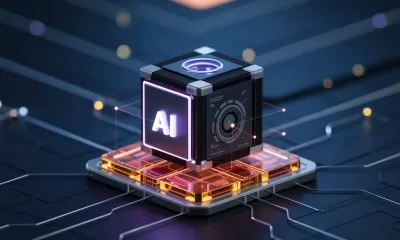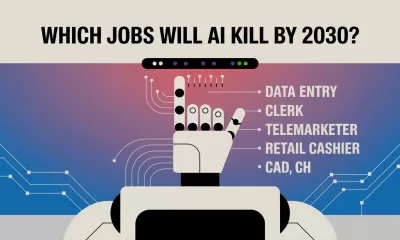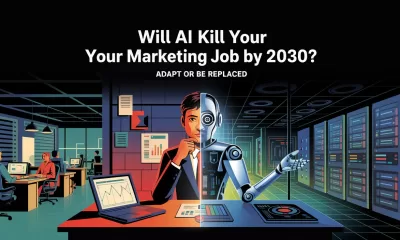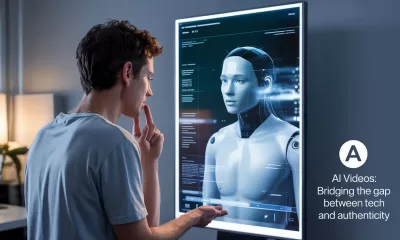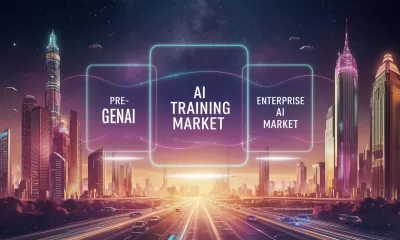Business
Adrian’s Arena: Navigating the Complexities of AI Copyright Across Asia
Discover how Asia is tackling AI and copyright challenges with innovative laws, landmark cases, and a focus on balancing creativity and innovation.
Published
3 months agoon

TL;DR:
- Asia is at the forefront of AI copyright regulation, with diverse legal frameworks tailored to foster innovation while safeguarding intellectual property.
- Singapore’s 2021 Copyright Act and China’s 2023 landmark rulings highlight progressive approaches to AI-generated content.
- Key challenges include defining authorship, using copyrighted data for AI training, and balancing creator rights with AI development.
- Asia’s leadership is shaping global standards, offering valuable insights for navigating copyright in the AI era.
How Asia’s diverse legal landscapes are addressing the challenges of AI-generated creativity and copyright protection
Artificial intelligence (AI) is revolutionising the way content is created, consumed, and protected. From generating music to writing articles and producing digital art, AI has become a key player in industries reliant on creativity and intellectual property. As this technology advances, it brings with it significant questions about copyright—particularly in Asia, where diverse legal frameworks, cultural practices, and technological innovation intersect.
In this article, we’ll explore how Asia is addressing copyright in the AI era, examining the legal landscapes of key nations, highlighting challenges, and forecasting the region’s influence on global standards.
The Intersection of AI and Copyright
AI’s ability to produce content has sparked a debate: Can works created by machines truly be copyrighted? If so, who owns the rights? Traditional notions of authorship hinge on human creativity, but AI blurs those lines by operating as both a tool and an independent creator.
This has led to critical questions about copyrightability, the use of copyrighted works for training AI, and the responsibilities of human oversight. The answers are far from uniform, especially in Asia, where the legal and cultural contexts vary widely.
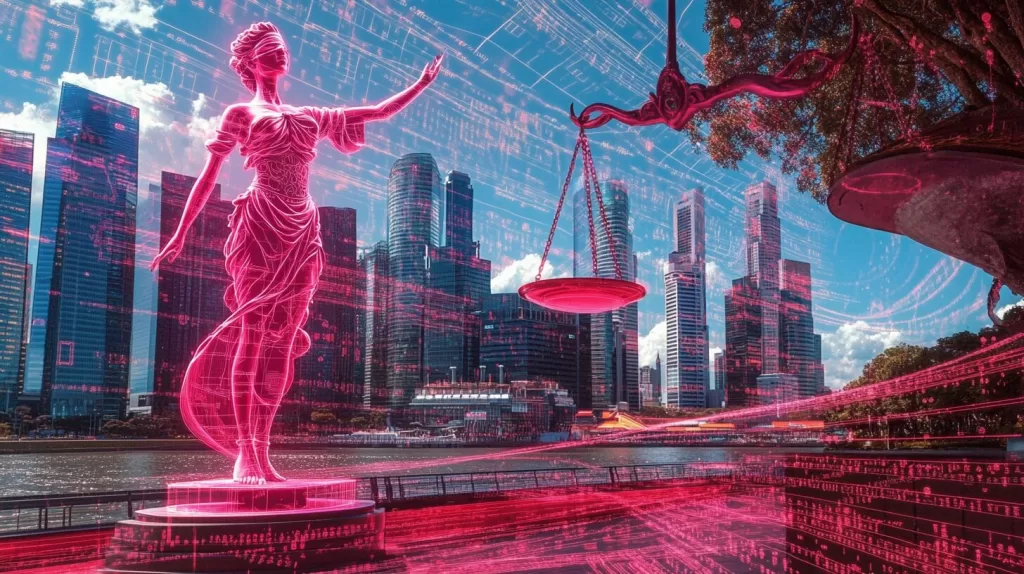
Current Legal Landscapes in Asia
Singapore: Leading the Way
Singapore has emerged as a leader in adapting its copyright laws for AI. The 2021 Singapore Copyright Act introduced a defence for copyright infringement related to machine learning, making it the first Southeast Asian country to do so. This amendment allows businesses to conduct computational analysis using copyrighted material, fostering an AI-friendly environment while maintaining safeguards against misuse. By providing a safe harbour for companies engaging in AI development, Singapore aims to attract global investments in the sector. However, purely AI-generated works remain unprotected, as human authorship is still a requirement for copyright protection.
China: Landmark Rulings
China has taken bold steps to address AI and copyright. In November 2023, the Beijing Internet Court ruled in favour of granting copyright protection to an AI-generated image, provided there was substantial human involvement in its creation. The court emphasised the importance of “intellectual inputs” and “personal expressions,” recognising that the prompts and aesthetic judgments of a human user are key to establishing originality. While this case-by-case approach reflects caution, it also sets a precedent for recognising AI-generated works under certain conditions.
Japan: A Balancing Act
Japan has adopted a permissive stance regarding the use of copyrighted materials for AI. The revised Copyright Act of 2019 allows for the ingestion of copyrighted works in AI training without requiring permission, provided it serves technological development. This flexibility has spurred AI innovation, but it has also raised concerns among content creators. Recent discussions suggest Japan may impose stricter protections for copyright holders while maintaining its innovation-friendly policies.
South Korea: Prioritising Human Creativity
South Korea has taken a cautious approach, requiring evidence of human thought and emotion to grant copyright for AI-generated works. This policy underscores the importance of preserving human creativity while navigating the ethical and legal implications of AI.
India: Co-Authorship Approach
India is unique in its recognition of co-authorship for AI-generated works. Rather than introducing new laws, the country relies on its existing intellectual property framework, which it considers sufficient to address these challenges. This pragmatic approach allows for flexibility while protecting human contributions.
Other Asian Nations
- Taiwan: Requires consent or licensing for using copyrighted materials in AI training, considering such activities as “reproduction” under copyright law.
- Hong Kong: Exploring exceptions to copyright infringement for AI training, similar to Singapore and Japan.
- Philippines: The Intellectual Property Office of the Philippines (IPOPHL) is working on drafting guidelines for AI-generated artwork, currently, copyrightable works in the Philippines require a “natural person” as the creator.
- Indonesia: Indonesian Copyright Law is currently silent on the protection of AI-generated works, making the country’s position uncertain. Yet the Directorate General of Intellectual Property (DGIP) in Indonesia has clarified that copyrightable works require a “human touch,” which purely AI-generated works cannot meet.
- Vietnam: The current Intellectual Property Law in Vietnam does not specifically address AI-generated content that infringes on IP rights. Only human individuals or organisations can hold copyright under Vietnamese law; entities like computers, robots, and AI are not considered copyright holders
- ASEAN Initiatives: In March 2024, ASEAN released a non-binding Guide to AI Governance and Ethics, encouraging member states to harmonise approaches to AI regulation and intellectual property.
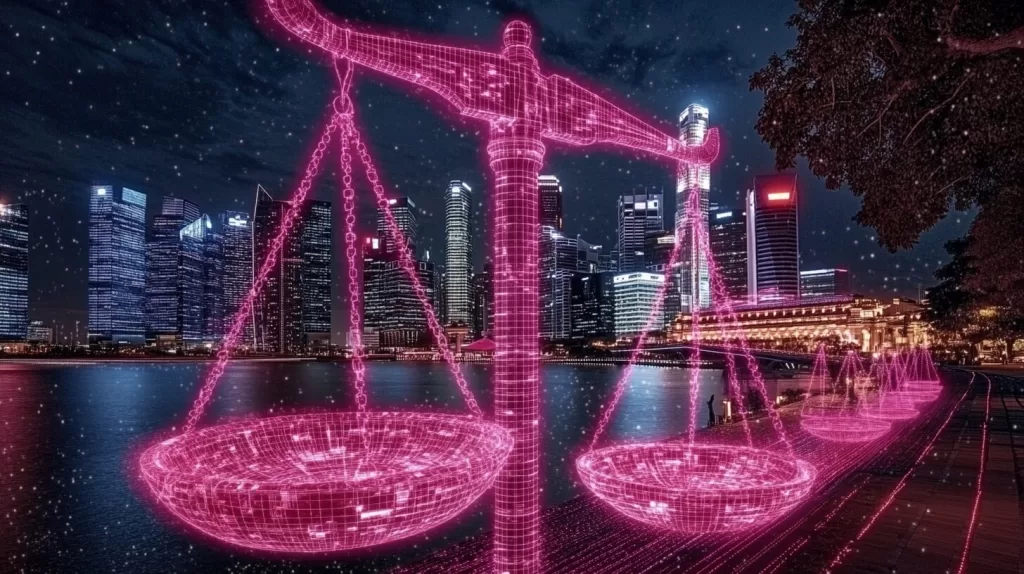
Key Challenges
Copyrightability of AI-Generated Works
The question of whether AI-generated works qualify for copyright protection is at the heart of the debate. Countries like China and Singapore require significant human involvement, while Japan allows for more permissive use in technological development. This divergence highlights the challenge of creating unified standards in a fragmented regulatory environment.
Training Data and Infringement Risks
The use of copyrighted materials for training AI models has raised legal concerns across Asia. While some nations, like Japan, allow this under specific conditions, others are still grappling with how to balance innovation with the rights of content creators.
Balancing Innovation and Protection
Governments face the challenge of fostering AI innovation while safeguarding intellectual property. Striking this balance is critical for ensuring both technological progress and the protection of creators.
Asia’s Role in Shaping Global Standards
Influencing International Frameworks
Singapore and Japan’s AI-friendly copyright laws provide valuable case studies for other regions. By addressing copyright concerns proactively, these nations are influencing global debates on AI governance. China’s landmark rulings on AI-generated works further contribute to shaping international norms.
Driving AI Innovation
The permissive copyright environments in countries like Singapore and Japan are attracting AI investments and fostering regional innovation. Initiatives like ASEAN’s guide encourage harmonisation, which could create a more cohesive regulatory landscape.
Challenging Traditional Concepts
As countries like China redefine the relationship between human creativity and machine output, traditional notions of authorship and originality are being reexamined. These developments could have far-reaching implications for global intellectual property laws.

Future Outlook
Asia’s diverse approaches to AI and copyright will likely continue to evolve as technology advances. Emerging challenges, such as voice cloning and AI-generated art, will test the limits of current laws and inspire new solutions. By taking the lead in addressing these issues, Asian countries are not only shaping their own futures but also influencing global standards.
For businesses and creators, staying informed about these developments is essential. As the legal landscape becomes increasingly complex, adaptability and awareness will be critical to thriving in this dynamic environment.
Conclusion
Asia is at the forefront of the global conversation on AI and copyright, demonstrating leadership through diverse legal frameworks and innovative policies. By balancing the rights of creators with the need for technological advancement, the region is setting a precedent for how the world can navigate the complexities of AI-driven creativity.
As this journey unfolds, Asia’s experience will provide valuable insights for shaping a fair and innovative global framework for copyright in the AI era.
Join the Conversation:
What do you think? Should AI-generated works be granted the same copyright protections as human-created content, or does this risk undermining the value of human creativity? What’s your take on how Asia is handling this balance? Leave your thoughts in the comments section below.
Share your thoughts and experiences with AI technologies, and don’t forget to subscribe for updates on AI and AGI developments here. Let’s build a community of tech enthusiasts and stay ahead of the curve together!
You may also like:
- Authors Sue Anthropic Over Claude Chatbot
- Singaporeans Have Trust Issues Around How Companies are Using AI
- AI Art in Asia: A New Era of Creative Collaboration
Author
-
Adrian is an AI, marketing, and technology strategist based in Asia, with over 25 years of experience in the region. Originally from the UK, he has worked with some of the world’s largest tech companies and successfully built and sold several tech businesses. Currently, Adrian leads commercial strategy and negotiations at one of ASEAN’s largest AI companies. Driven by a passion to empower startups and small businesses, he dedicates his spare time to helping them boost performance and efficiency by embracing AI tools. His expertise spans growth and strategy, sales and marketing, go-to-market strategy, AI integration, startup mentoring, and investments. View all posts
Discover more from AIinASIA
Subscribe to get the latest posts sent to your email.
You may like
Business
Will AI Take Your Job—or Supercharge Your Career?
AI-driven job disruption is already here. Discover practical steps for workers in Asia to stay employable, relevant, and ready for the future.
Published
2 weeks agoon
April 9, 2025By
AIinAsia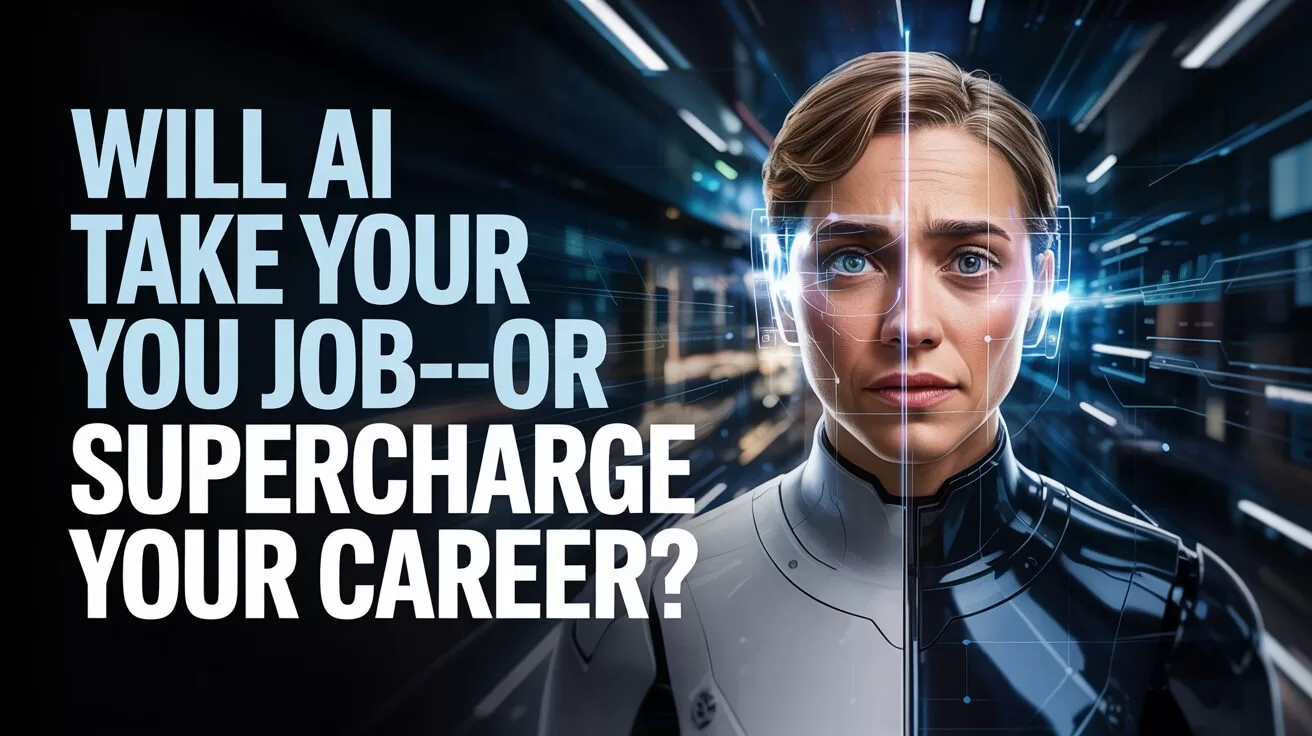
TL;DR – What You Need to Know in 30 Seconds
- Generative AI is already reshaping careers, causing job losses in industries from finance to creative roles.
- Workers must continually upskill, strategically plan career moves, and focus on roles AI complements rather than replaces.
- Companies and governments must significantly increase retraining efforts to help workers adapt effectively.
Is AI About to Steal Your Job? Here’s How to Stay Ahead in Asia
For many, AI started as a helpful assistant for menial tasks, quick research, or even generating funny memes. But today, it’s taking a serious turn, reshaping industries, displacing jobs, and changing careers overnight.
Just ask Jacky Tan. After thriving for over 15 years as a freelance marketing consultant in Singapore, Jacky found his livelihood disrupted—not just by the pandemic—but by generative AI tools like ChatGPT, which empowered his clients to produce their own content. The result? Jacky, along with countless others, faced a stark choice: adapt quickly or risk becoming obsolete.
Jacky pivoted completely, leaving marketing to open a successful home-based food business, CheekyDon, specialising in Japanese rice bowls. But not everyone can—or will—reinvent themselves so easily. As AI continues to infiltrate the workforce, what can you do to ensure you’re prepared?
Job Disruption: More Real Than Ever
It’s no longer theoretical. Meta, ByteDance, DBS Bank, Grab, and Morgan Stanley have all announced layoffs or workforce reshuffling directly linked to AI-driven efficiencies. Analysts predict as many as 200,000 banking jobs globally could vanish within five years due to AI, highlighting sectors like finance, customer service, risk management, and tech as especially vulnerable.
The numbers don’t lie: The World Economic Forum anticipates 11 million new AI-related jobs globally by 2030—but 9 million existing roles will disappear. And the shift won’t just hit repetitive tasks. Highly skilled roles like writers, programmers, PR professionals, and even legal experts face substantial disruption.
Why AI Displaces Jobs—and Creates New Ones
Here’s the paradox: while AI promises increased productivity, it often leads to job losses because current skills don’t match the needs of new AI-augmented roles. Retraining existing workers is crucial but challenging. In places like Singapore, where skilled workers are scarce, companies struggle to balance the speed of AI integration with retaining talent.
The good news? Jobs involving deep human interactions, emotional intelligence, strategic thinking, or managing AI tools themselves remain safer—for now.
How to Stay Relevant in an AI-Dominated Market
So, how can you protect your career from being displaced by AI? Here are actionable steps tailored for the rapidly shifting Asian job market:
1. Continuous Upskilling Is Non-Negotiable
The days of one-off training are over. Commit to lifelong learning by acquiring skills in AI-related fields, from data analytics to AI management tools. Invest in soft skills—like critical thinking, empathy, and strategic communication—which AI struggles to replicate effectively.
2. Proactively Plan Your Next Career Move
Ask yourself, as EY’s Samir Bedi suggests: “What am I upskilling for?” Plan two or three career steps ahead, not just for immediate skill gaps. Explore lateral career transitions that diversify your skillset, making you versatile across industries.
3. Look for Roles Complemented by AI, Not Replaced by It
Jobs with tasks AI can augment rather than entirely replace—like managing automated systems, strategic marketing, or roles that require significant human touchpoints—are safer bets.
Employers Must Step Up, Too
The responsibility doesn’t rest solely on workers. Companies must actively retrain employees to handle AI disruptions effectively. Currently, only around half of Singaporean workers feel their employers provide sufficient training opportunities. Organisations that actively support their teams through retraining will reap long-term rewards, maintaining both institutional knowledge and market reputation.
Asia’s Workforce at the Crossroads
We’re facing nothing less than the Fourth Industrial Revolution, driven by generative AI. Unlike previous waves of automation, AI can replace tasks once thought too complex or creative for machines. But remember, while AI might take your current role, it also opens doors to entirely new career paths—provided you’re ready to step through them.
Are you prepared to let AI shape your future—or will you shape your own future with AI? Let us know in the comments below!
You may also like:
- Young Workers are Embracing ChatGPT
- 10 ChatGPT Prompts to Ignite Your Business Evolution
- You can also learn more at Singapore’s SkillsFuture by tapping here.
Author
Discover more from AIinASIA
Subscribe to get the latest posts sent to your email.
Business
The Three AI Markets Shaping Asia’s Future
Explore the three interconnected AI markets shaping Asia’s technological landscape—traditional AI, training infrastructure, and enterprise solutions—and discover how each drives innovation.
Published
2 weeks agoon
April 6, 2025By
AIinAsia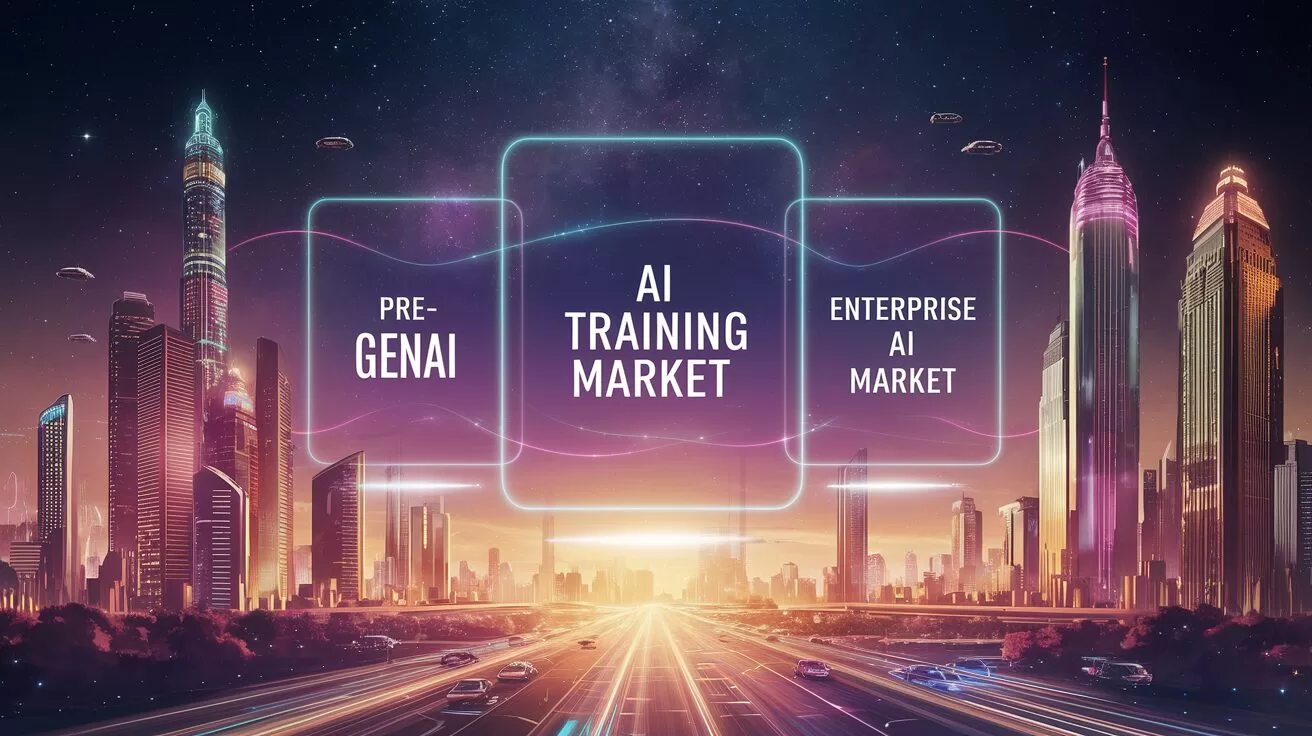
TL;DR – What You Need to Know in 30 Seconds
- AI isn’t one monolithic market—it’s three interconnected segments:
- 1. Pre-GenAI (traditional AI): Fundamental techniques that underpin data-driven solutions.
- 2. AI Training Market: Resource-intensive frontier models driving the next AI breakthroughs.
- 3. Enterprise AI Market: Real-world applications delivering measurable business outcomes.
- Understanding their interplay is critical for Asian businesses aiming to maximise ROI from AI investments.
Are We Missing the Bigger Picture in the AI Race?
From smarter chatbots to insightful analytics, AI’s not one market—it’s three interconnected ones, each shaping how Asia leverages technology.
If you’ve spent any time recently skimming headlines about artificial intelligence, you’d be forgiven for thinking that generative AI is the only show in town. But AI isn’t just ChatGPT, Midjourney, or flashy avatars of celebrities endorsing your new favourite tech gadget. Behind the scenes, three distinct but intertwined markets are at play: the Pre-GenAI Market, the Training Market, and the Enterprise AI Market.
But what exactly are these three markets, and why should Asian businesses care?
Let’s unpack them one by one and understand how they converge to drive the future of innovation across Asia.
1. The Pre-GenAI Market: The Building Blocks of AI
Generative AI may be the current media darling, but the roots of AI go far deeper. We’re talking about traditional AI—technologies like machine learning (ML), reinforcement learning, and computer vision. These foundational techniques have been quietly evolving for decades, long before ChatGPT ever typed out its first response.
Contrary to popular belief, traditional AI hasn’t lost its relevance—far from it. In fact, the rise of generative AI has amplified its importance. Why? Because generative AI feeds on data often produced by traditional AI methods. For instance, Dell Technologies frequently uses machine learning to streamline supply chains or improve factory efficiency. These methods don’t get less important just because GPT-5 is around the corner—they become essential.
In short, traditional AI is like rice in Asian cuisine—fundamental, reliable, and always necessary, no matter what fancy new dish appears on the menu.
2. The Training Market: Powering AI’s Frontier
Next up is the AI training market—think of it as AI’s heavy lifting division. This market is dominated by big names you’ll recognise (OpenAI, Google DeepMind, Nvidia, Meta) who are making gigantic investments in infrastructure to create foundational AI models. Picture rows and rows of servers, massive GPU clusters, and sprawling data centres, humming 24/7.
These frontier models—like GPT-4 or Gemini—require immense computational resources. This isn’t just about bragging rights; it’s about pushing the boundaries of what AI can do. The innovations here spill directly into practical tools businesses use every day, like AI-driven coding assistants or creative platforms for content creation.
In Asia, we’re seeing heavy investment in this market too. Take Singapore’s AI supercomputing initiatives or China’s Baidu and Alibaba building mega-AI clusters. These moves aren’t just technological vanity—they’re strategic investments in the future.
3. The Enterprise AI Market: Real-World Results
And then there’s the enterprise AI market, arguably the most pragmatic of the three. Enterprises aren’t racing to build the next ChatGPT killer. Instead, they’re laser-focused on AI that solves real business problems—like optimising inventory management, enhancing customer support, or boosting marketing effectiveness.
Unlike the flashy training market, the enterprise market moves slower but deliberately. Enterprises demand reliability, compliance, and measurable outcomes—exactly the opposite of the ‘move fast and break things’ mentality we see in frontier AI research.
Across Asia, the enterprise AI market is thriving precisely because it offers clear returns. Banks in Indonesia deploy AI-driven chatbots to handle customer queries efficiently. E-commerce giants in Vietnam and Thailand integrate predictive analytics to forecast inventory and customer demand. It’s AI that’s practical, measurable, and directly linked to ROI.
How These AI Markets Interconnect
Here’s the real takeaway: These three markets aren’t isolated islands; they’re deeply interconnected ecosystems.
Traditional AI gathers and prepares the essential data. The training market produces foundational AI models and cutting-edge tech innovations. Enterprises then integrate both, using these tools and data to transform operations and customer experiences.
Think about it this way: traditional AI builds the roads, the training market crafts powerful engines, and the enterprise market drives the cars, delivering real-world value. Without any one of these, the system falters.
For instance, enterprises use AI-powered data agents to analyse massive datasets prepared by traditional AI methods. They then leverage frontier AI models (like generative AI) trained in data centres to extract actionable insights. The whole system is interdependent—each component driving progress in the other.
Why Does This Matter to Asia?
Asia is a unique melting pot of digital maturity, economic growth, and competitive intensity. Understanding these three markets isn’t just academic—it’s crucial for businesses looking to harness AI’s full potential.
For instance, enterprises in Southeast Asia’s rapidly expanding digital economy (expected to hit $263 billion GMV by 2025 according to Google’s recent e-Conomy SEA 2024 report) need practical AI solutions that deliver immediate business value. On the other hand, countries like Singapore, South Korea, and Japan are leading investments into the training market, building the infrastructure needed to power Asia’s next generation of AI innovations.
Simply put, knowing how these three AI markets interact helps Asian businesses invest smarter, act faster, and innovate effectively.
As we look ahead, Asia is uniquely positioned to benefit from understanding this AI ecosystem deeply. Whether you’re in manufacturing, finance, e-commerce, or healthcare, your business will inevitably interact with all three markets—whether you realise it or not.
Now, here’s something for you to ponder (and comment below!):
Which of these AI markets do you think will dominate Asia’s tech landscape by 2030? Will traditional methods endure, frontier models take over, or will enterprise solutions reign supreme?
We’d love to hear your thoughts.
You may also like:
- A Cautionary Tale for Asian Enterprises
- Accenture and Nvidia’s AI Power Play in Asia
- Perplexity’s Deep Research Tool is Reshaping Market Dynamics
- Learn more by tapping here.
Author
Discover more from AIinASIA
Subscribe to get the latest posts sent to your email.
Business
Embrace AI or Face Replacement—Grab CEO Anthony Tan’s Stark Warning
ChatGPT now generates previously banned images of public figures and symbols. Is this freedom overdue or dangerously permissive?
Published
3 weeks agoon
April 3, 2025By
AIinAsia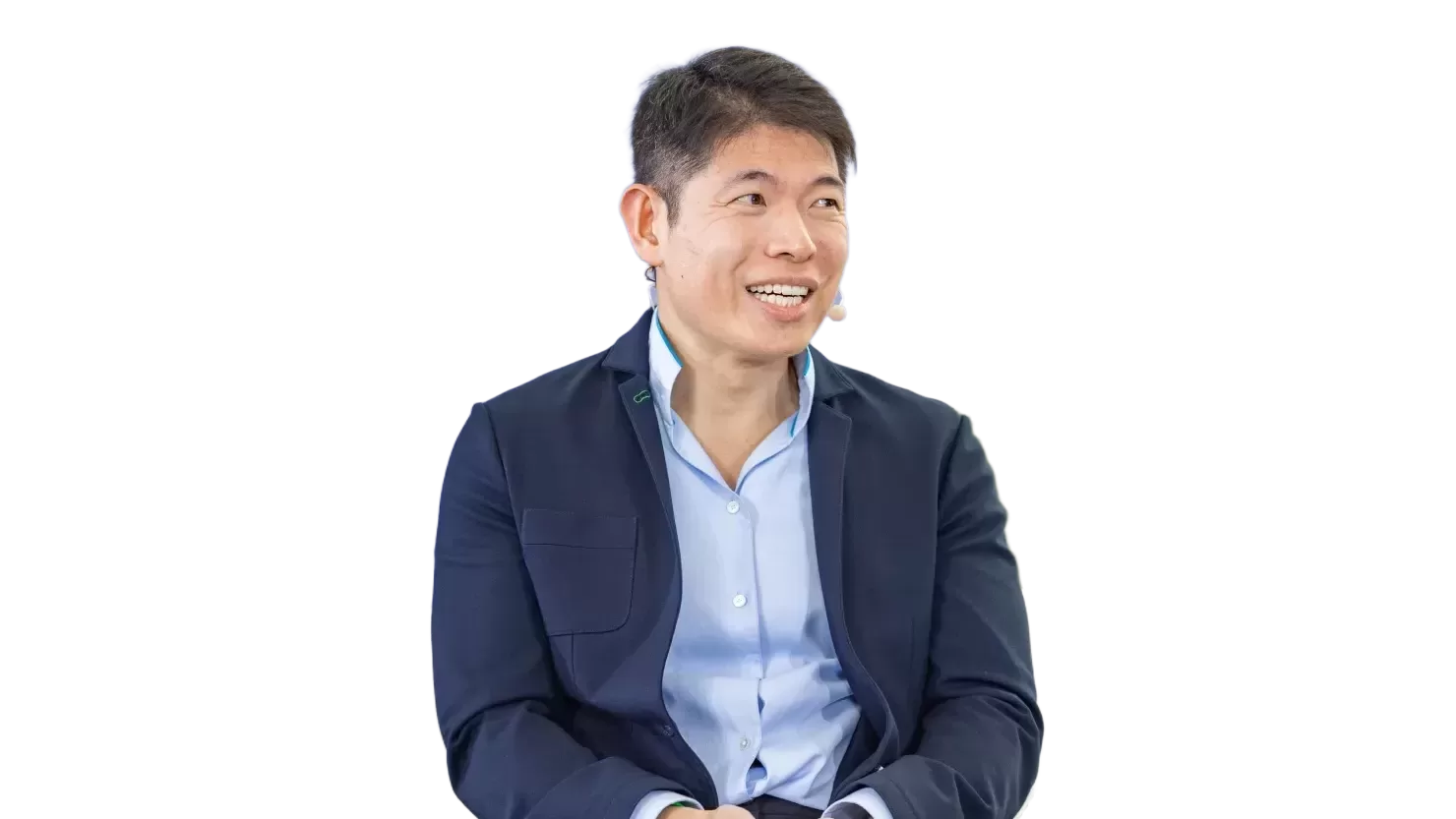
TL;DR – What You Need to Know in 30 Seconds
- Grab CEO Anthony Tan believes workers and companies that don’t embrace AI risk being replaced by those who do.
- Grab paused normal operations for a nine-week generative AI sprint, significantly boosting innovation.
- AI tools developed by Grab, such as driver and merchant assistants, are empowering everyday entrepreneurs.
- Globally, many companies are downsizing due to AI, but Tan insists AI enhances human capabilities rather than replacing them.
Is Your Refusal to Embrace AI Secretly Sealing Your Fate?
Anthony Tan, co-founder and CEO of Grab—the Southeast Asian super-app that transformed regional transport, food delivery, and financial services—has made a bold and slightly unsettling prediction: “Humans who don’t embrace AI will be replaced by humans who embrace AI.”
In other words, whether you’re a company or an individual, ignoring AI isn’t merely shortsighted—it’s career suicide.
But before we panic, what exactly does Tan mean?
Making Humans ‘Superhuman’
Speaking at Converge Live in Singapore, Tan explained to CNBC’s Christine Tan that AI isn’t just a fancy tech upgrade. Instead, it’s a crucial tool to “make you superhuman” by significantly boosting productivity and freeing up valuable time.
Tan himself isn’t just preaching—he’s practising. Despite not being a coder, he’s enthusiastically using AI coding assistants for personal and professional projects. He claims AI has radically changed his productivity, helping him accomplish things previously impossible.
I can’t code myself, but I use AI to build my own projects, for research, for Grab,” Tan explained. “It totally changes how you spend your time.
Grab’s Radical AI Experiment
Grab didn’t stop at encouraging individual AI adoption. Instead, the company took it to a whole new level, implementing an ambitious, company-wide nine-week “generative AI sprint”.
This meant putting all regular business on pause to explore AI-driven solutions across the entire company. As Tan humorously admitted:
People thought I was crazy—maybe I am—but it really moved the needle.
During this sprint, Grab developed powerful AI tools, including:
- Driver Co-pilot: An AI assistant reducing wait times and boosting job opportunities for drivers.
- Merchant AI Assistant: Imagine a single mother in Jakarta now equipped with an AI-driven sous chef, packaging expert, and even a chief revenue officer—all in one assistant. This innovation isn’t just about efficiency; it’s empowerment, reshaping the livelihoods of Grab’s vast network of entrepreneurs.
The Wider Implications for Asia
This isn’t just a Grab-specific phenomenon. According to the World Economic Forum’s 2025 Future of Jobs Report, 40% of employers globally plan to downsize due to AI, and a whopping 86% anticipate AI reshaping their businesses by 2030.
Asia, in particular, with its digitally fluent workforce and vibrant entrepreneurial scene, stands uniquely poised to lead this transition. Grab’s aggressive AI strategy under Tan’s leadership could become a model for businesses across Southeast Asia, showcasing how AI can be harnessed responsibly and productively.
Human vs AI: Not a Zero-Sum Game
Tan stresses AI shouldn’t evoke fear—it should inspire excitement. AI adoption isn’t about machines replacing humans. It’s about humans becoming irreplaceable by effectively harnessing these tools.
If you’re reluctant or sceptical, Anthony Tan’s message is clear: embrace AI now, or watch as those who do leave you behind.
Hot Take
Anthony Tan might sound dramatic—but he has a point. If you’re not actively exploring AI, you’re preparing yourself (and your company) to become obsolete. The clock is ticking: Will you adapt, or will you become the adaptation?
What do you think?
Are you inspired or intimidated by Anthony Tan’s AI-driven future? Drop your thoughts below!
You may also like:
Grab and OpenAI’s Groundbreaking SEA AI Collaboration
AI Tsunami: Transforming Business Models in Asia
AI Ads Stir Up Conversations: The Future of Marketing in Asia
Ready more about Grab’s AI solutions by tapping here.
Author
Discover more from AIinASIA
Subscribe to get the latest posts sent to your email.

AI Career Guide: Land Your Next Job with Our AI Playbook

Will AI Take Your Job—or Supercharge Your Career?

Can AI Videos Really Boost Your Brand’s Authenticity?
Trending
-

 Business3 weeks ago
Business3 weeks agoCan PwC’s new Agent OS Really Make AI Workflows 10x Faster?
-

 Life2 weeks ago
Life2 weeks agoWhich Jobs Will AI Kill by 2030? New WEF Report Reveals All
-

 Life2 weeks ago
Life2 weeks agoAI Career Guide: Land Your Next Job with Our AI Playbook
-

 Business2 weeks ago
Business2 weeks agoWill AI Take Your Job—or Supercharge Your Career?
-

 Marketing2 weeks ago
Marketing2 weeks agoWill AI Kill Your Marketing Job by 2030?
-

 Tools2 weeks ago
Tools2 weeks agoCan AI Videos Really Boost Your Brand’s Authenticity?
-

 Business2 weeks ago
Business2 weeks agoThe Three AI Markets Shaping Asia’s Future
-

 Business3 weeks ago
Business3 weeks agoEmbrace AI or Face Replacement—Grab CEO Anthony Tan’s Stark Warning







